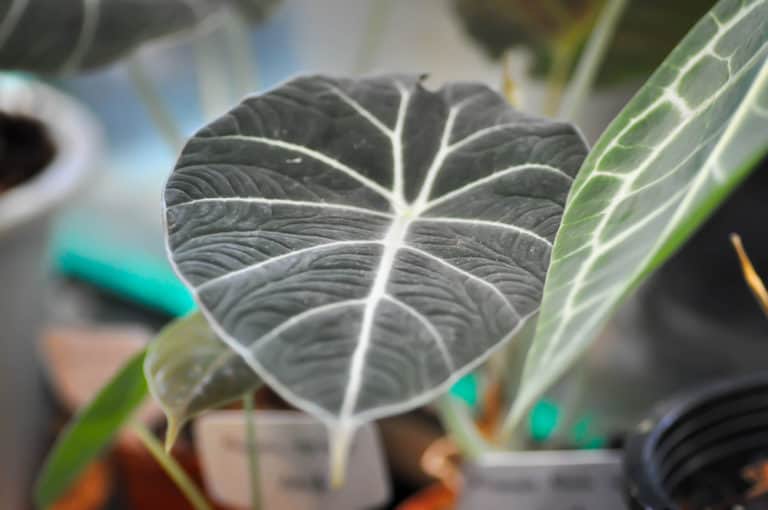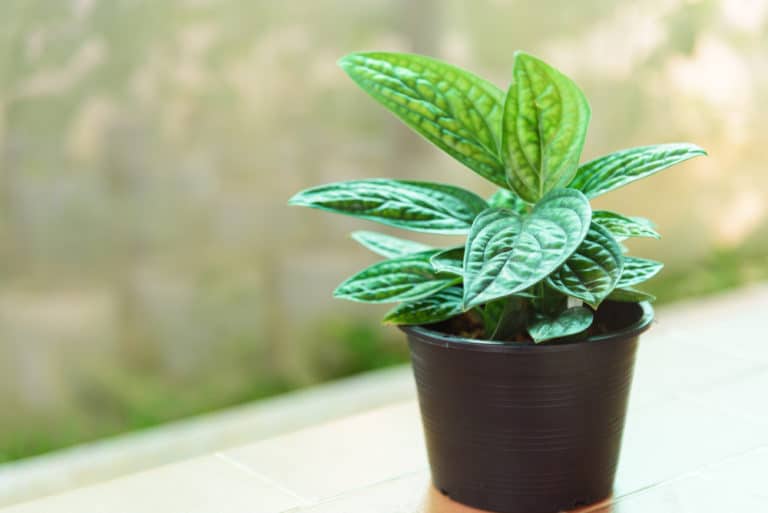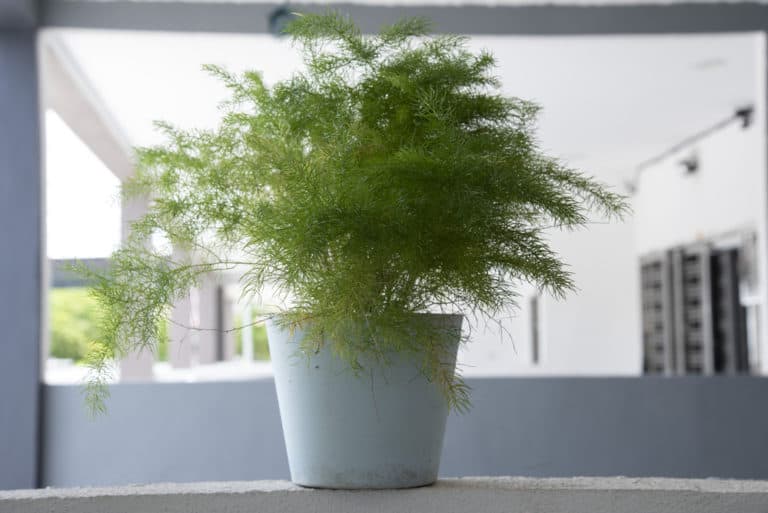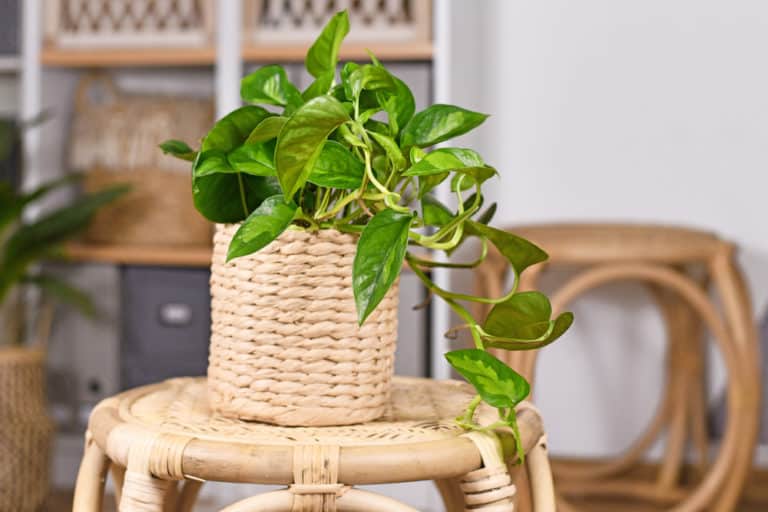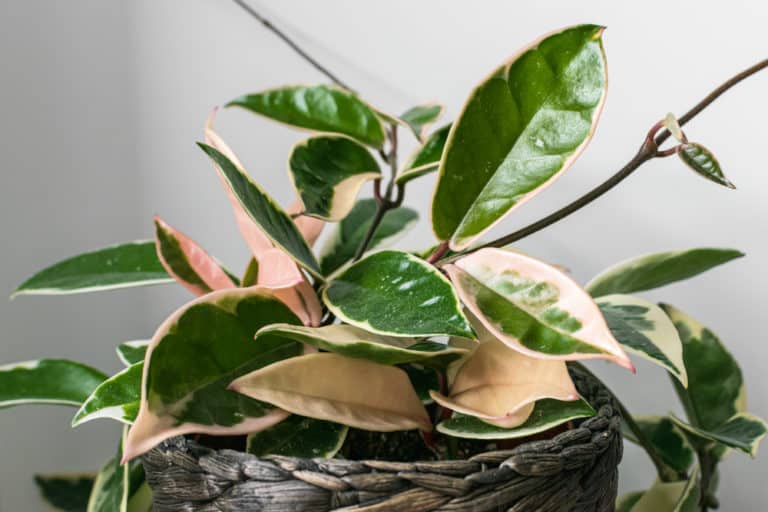Rhaphidophora Tetrasperma ‘Mini Monstera’ Care Guide (2024)
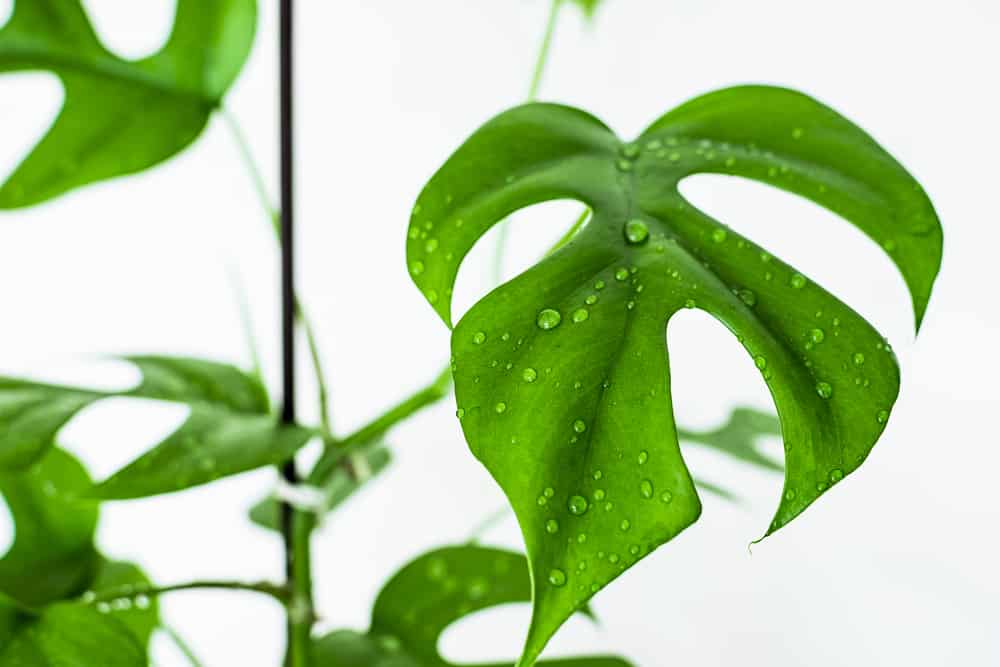
Many folks mistake Rhaphidophora tetrasperma for Monstera deliciosa. While they do have some resemblance especially with how the leaves look, these two species belong to two different genuses. Nevertheless, they share the same family.
This tropical wonder is a favorite among gardeners. It certainly adds lushness to bare living spaces.
Plant Profile
Common Name: Mini Monstera, Philodendron “Ginny”, Philodendron “Piccolo”
Scientific Name: Rhaphidophora tetrasperma
Type: Aroid
Origin: Southern Thailand and to Malaysia
Habitat: Dry to moist or wet forest
Size: 4 to 5 feet (1-1.5 meters) tall if indoors; up to 12 feet (3.65 meters) if outdoors
Toxicity: Toxic to pets and humans
Colors: Dull light-green
Blooms: Canoe-shaped spathe
Plant Care
Light: Bright and indirect light
Watering: Medium
Temperature: 55°F to 85°F (12 to 29°C)
USDA Zone: 9b-12, but should come indoors in 9b-10 when cold
Air humidity: High
Soil pH: Slightly acid (6.1 – 6.5) to Neutral (6.6 – 7.3)
Fertilizing: Fertilize once a month using a liquid, balanced fertilizer
Propagation: Cuttings
Re-Potting: Twice a year
Pruning: Regular
What’s Unique About Rhaphidophora tetrasperma?
Just like that of Monstera, the foliage of Rhaphidophora tetrasperma has fenestrations. Yes, that’s what we call those splits and holes you see on the leaves. It’s a vining plant that grows vigorously in a short period of time. In other areas, this species is considered mildly invasive especially if grown outdoors.
Also known as mini monstera, this aroid is a native of Southern Thailand and Malaysia. They’re naturally found in dry to moist or wet forest areas, sprawling on large trees for anchor and shade.
The Rhaphidophora tetrasperma plant is suitable both for outdoor and indoor conditions. It’s a perfect treat to all newbie gardeners.
Appearance
Although the Rhaphidophora tetrasperma appearance is almost the same with Monstera, it’s size is relatively smaller. At closer look, the foliage color also differs in shade and texture. There’s also the presence of aerial roots found in the internodes. You just have to be an observer to spot such differences.
There are numerous AKAs to refer to a Rhaphidophora tetrasperma common name. To avoid confusion, let’s see what makes this plant distinct.
Foliage
This Rhaphidopora species is known for its foliage value. Since it looks like a small monstera plant, it easily caught the attention of many aroid enthusiasts. The leaves are ovate to lanceolate in shape. Each one is decorated with elliptical split holes that serve as windows for ambient light to pass through.
Once you touch the foliage, you’d feel that it is thin and flexible. This is contrary to the leathery and stiff texture of the Monstera. When it comes to its color, you’ll observe that it has dull light-green shade. This is different to the darker color of Monstera leaves.
Flowering
R. tetrasperma produces flowers that are fondly termed as canoe-shaped spathe. Enclosed in that spathe is a spadix which bears the clusters of small flowers. If you’d had another aroid species before, you’re most likely to find resemblance between them.
However, you will rarely observe the Rhaphidopora tetrasperma flowering when it’s kept indoors as a houseplant. So, if you don’t see one, don’t be disappointed. It’s quite a normal thing to happen. On the other hand, plants grown outdoors have a higher chance of producing flowers.
Nevertheless, it isn’t much of a concern. Just consider the Rhaphidophora tetrasperma blooming as an added bonus. The plant’s foliage is attractive enough anyway.
Size and Growth
If left unattended, this species can grow to an enormous size. That cannot be helped considering that the Rhaphidophora tetrasperma growth rate is really fast. In the wild, it can grow up to 12 feet (3.65 meters) high. Thanks to the tall trees where they climb on.
Indoors, you can manage the plant to grow a maximum size of up to 4 to 5 feet (1-1.5 meters) tall. Of course, you’d have to provide trellis for support. You can use wood, steel or whatever sturdy materials you have. Tie the plant’s stems along the trellis to train them.
Fragrance
The Rhaphidophora tetrasperma fragrance isn’t distinct. It’s safe to say that the plant is fragrance free. Neither does it emit pleasant or foul odor. Or if they do, it isn’t something that’s noticeable to the human’s senses. If you’re someone who’s sensitive to smell, then, this plant will pass your taste.
Interestingly, there are some aroid species where the flowers emit strong, disgusting odors such as the famous Titan arum. Luckily, R. tetrasperma doesn’t have that characteristic. All the more reason for us to love this foliage plant.
The only time you’d find a stinking smell is when the roots get rotten as a result of overwatering.
Toxicity
Aroid plants are generally toxic to pets and humans. There are more than 3000 species in this family which includes the Rhaphidophora tetrasperma. It’s necessary to take caution in handling this houseplant to avoid future complications in health.
The plant contains calcium oxalates crystals in its tissues. Such a Rhaphidophora tetrasperma toxicity could lead to irritation and discomfort.
For Humans
It’s important to remember that this foliage plant isn’t edible. So, try to keep it away from the reach of your kiddos. We know they love to experiment with whatever they see. And your plants aren’t an exemption, right?
All parts including leaves, stems, roots and flowers of this aroid contain raphides. These are the sharp needle-shaped crystals of calcium oxalate. Ingestion of any of this plant’s parts could result in mouth and throat irritation. You’d experience pain and a burning sensation as well as numbing.
Take this as a serious warning. Always handle your mini monstera plant with extra care.
For Pets
The presence of a high amount of calcium oxalates in plants is a form of physical protection against herbivory. Basically, they draw away grazing animals through these irritating crystals. The unpleasant and irritating taste of this baby monstera is enough reason for these herbivores to not come back.
However, pets who have less experience with plants might try to have a bite. Aside from the painful sensation they’ll feel, they could also experience vomiting, nausea and loss of appetite. Of course, the intensity of symptoms would depend on how much plant was ingested.
We advise that you seek immediate medical help for your cats or dogs.
Also, make sure to check out our in-depth Rhaphidophora decrusiva plant care guide.
Suggested Uses
The Rhaphidophora tetrasperma plants are a great addition to your existing foliage collection. The leaves are undoubtedly stunning. They perfectly bring out the tropical vibe that you badly want to pull off inside your home. This plant easily adapts to indoor conditions, thus, a good candidate for a houseplant.
You can put them in pots and just let them hang. You also have the option to let it creep in the standing trellis. And if you’re creative enough, you can use shaped trellis to train your mini monstera to follow a desired appearance. There are numerous ways to use this plant as a live home ornament.
Rhaphidophora Tetrasperma Care Guide
It’s a blessing to grow Rhaphidophora tetrasperma because this plant is easy to care for and maintain. The growing conditions that it needs aren’t that difficult to attain. And even if you have had a few lapses, your plant would be a little tolerant. Be assured that it won’t easily die on you.
Light
Since this species naturally grows under partial shade, what it needs is bright but indirect light. Remember that its origin habitat is a forest where only filtered light is available because of the presence of large and tall trees. This light condition is what you should mimic for growing Rhaphidophora tetrasperma.
If you have a tree in your outdoor landscape. You can allow this plant to appress in its trunk. Or you can just hang it under its canopy. If indoors, a bright location is the best spot. Make sure there’s enough light available.
Achieving the exact Rhaphidophora tetrasperma light requirements is critical for the plant’s growth.
Watering
Watering of Rhaphidophora tetrasperma can be a little demanding especially during the hot and dry seasons. Why? This aroid loves to keep its soil moist. So, you need to provide regular watering.
Nevertheless, it isn’t tolerant of waterlogging either. It’s important to still regulate the amount of water applied so the soil won’t remain soggy. The plant requires a medium amount of water that should be applied at a consistent rate. The key is to water when the soil is getting partially dry.
Avoid leaving the soil dry for too long. There’s no such thing as Rhaphidophora tetrasperma succulent. Your plant has no extra water reservoir unlike your aloes and string plants.
Temperature
The best Rhaphidophora tetrasperma temperature ranges between 55°F to 85°F (12 to 29°C). The plant is sensitive to extra cold and extra hot temperatures. It has no tolerance for frost and it can turn a little wilty when it’s really hot.
For better mini monstera care, we advise that you grow it if you’re living in areas under USDA Zones 9b-12. Just make sure that you bring your plant indoors during the night when temperature is much cooler.
Also, you should keep this plant away from sources of cold and hot drafts such as air conditioners and heaters. Such extremes could damage the plant.
Air Humidity
Aroid species like our Rhaphidopora tetrasperma love high humidity. You’ll observe more vigorous growth when it’s surrounded by ample moisture rather than when it’s dry. A 50 to 60% humidity level will yield the best results.
On the one hand, it can also tolerate the average room humidity. All you need is to provide supplementary sources of moisture like a humidifier. Occasional misting would also do the work. We also recommend grouping plants together if you have many tropical species indoors. These techniques help achieve proper Rhaphidophora tetrasperma humidity.
Is your location a naturally arid place? Then, save yourself from trouble. Leave this plant to those who have the right growing conditions.
Soil
There are three things you have to remember when preparing for the Rhaphidophora tetrasperma soil. It has to be well-draining, moist, and rich in organic matter. An all-purpose potting soil will do so provided that it has the necessary amendments like perlite and peat moss. If the soil is loose enough, you’d have no trouble draining excess water.
For the pH, the soil must be slightly acidic (6.1 – 6.5) to neutral (6.6 – 7.3). This helps make nutrients more available for the plant. And it always helps to use a previously sterilized mix to ensure that it’s free of pathogens.
Fertilizing
Fertilize your plant with a liquid, balanced fertilizer once a month. The added nutrients would help increase the size of Rhaphidophora tetrasperma in a short span of time. Although this plant isn’t a heavy feeder, a lack of just one essential nutrient could hamper its growth.
Of course, you have the option to use organic fertilizers that are slow-release like compost. They would need a few months for them to be fully utilized by your monstera minima (another name for R. tetrasperma).
Apply fertilizer only during the active growing stage. No need to fertilize during colder seasons as the plant gets dormant.
Propagation
It’s always wise to save a Rhaphidophora tetrasperma cutting after pruning. Rooting such cuttings is the easiest way to propagate this aroid. Once it reaches a considerable size, you can trim off a mature and good quality stem.
Even a stem with a single node with at least one leaf will be enough for the propagation of Rhaphidophora tetrasperma. You can place the cutting in water until roots develop. You can also plant it directly in the potting soil.
If you’re up for an adventure, you can always purchase Rhaphidophora Tetrasperma seeds online. Sow them and wait for the germination to take place. Obviously, this would take longer as you’re starting from scratch.
Re-Potting
When it comes to R. tetrasperma, you need to give serious attention to its repotting. This one grows really fast and so the roots need more room for growth. Most of the time, you need to repot twice a year.
You need larger and deeper containers in re-potting Rhaphidophora tetrasperma. Make sure to carefully remove it from its previous pot to avoid disturbing the roots. Shake off the old potting soil and check for the overall health of its root system. There may be a need to trim off rotten and dead roots.
Following repotting, place a trellis to train the Rhaphidophora tetrasperma shape into a particular design.
Pruning
Another important aspect of the Rhaphidophora tetrasperma care is pruning. Since this plant can grow vigorously, you have to regularly prune to keep it at a specific size. Untrimmed plants can become an inconvenience especially if kept indoors.
Pruning Rhaphidophora tetrasperma also involves the removal of dead and yellowing leaves. This practice helps the plant remain healthy. You can remove up to 25% of the plant’s entire size. Be careful not to overdo it to avoid inflicting serious damage.
Remember to sterilize your pruning shears before and after use. Not only is it hygienic but it also prevents the spread of diseases.
Rhaphidophora Tetrasperma Common Problems
We know that care for Rhaphidophora tetrasperma isn’t that hard. But we don’t want you to be complacent either. There are certain unfavorable conditions that could stress your plant. That’s why it always pays to be prepared.
Below are some of the most common pests and diseases that could strike your R. tetrasperma.
Pests
Spider mites are the usual complaint of many gardeners when it comes to this aroid. This tiny, sucking pest is difficult to spot using naked eye because its size is just about 1/50 inch long. You’ll most likely notice them when their population has significantly grown.
To deal with spider mites, give your plant a splash of water. The pressure coming from a hose or shower is enough to drive them away. An insecticidal soap will also do the work.
Aside from these extra tiny creatures, we’re lucky there are no other Rhaphidophora tetrasperma pests to be scared of.
Diseases
The number of Rhaphidophora tetrasperma diseases are just few. In fact, the only serious problem you could possibly face is the fungal root rot. This disease is caused by overwatering. Since the soil is waterlogged, the disease-causing fungi are more active. This is why it’s important not to overwater.
If you suspect that your plant is experiencing root rot, go and repot it to a new container. You will need to remove the damaged and diseased roots. A fungicide treatment will also help prevent the disease from coming back.
Well-treated plants will heal and grow back in time. Don’t lose hope.
Growing Problems
As fellow gardeners, we’re lucky enough that there aren’t many Rhaphidophora tetrasperma problems to encounter. This interesting species isn’t that demanding. And if you’re a busy plant parent or one that has just started, this aroid suits you.
Problems will only arise if the growing conditions are extremely unfavorable. Low light conditions, low humidity levels, too cold or too hot temperatures are just a few of these environmental stressors.
But if you provide the best monstera minima care, this plant will reward you with lush foliage. Remember that plants are like babies. They need tender, loving care while they’re young.
FAQ
How do you care for a Rhaphidophora tetrasperma?
It’s easy to please Rhaphidophora tetrasperma. Just provide bright indirect light, medium amount of water, high humidity, and warm temperature. Make sure it’s planted in well-draining soil.
What is the difference between Rhaphidophora tetrasperma and Monstera deliciosa?
Taxonomically, Rhaphidophora tetrasperma and Monstera deliciosa come from the same family Araceae but of different genus. They aren’t the same plants although they look almost the same.
Is Rhaphidophora tetrasperma toxic?
Yes. It contains high concentration calcium oxalates crystals in the form of raphides. These crystals, once ingested, can irritate the mouth and throat as well as cause nausea, and vomiting.
How do I make mini Monstera fuller?
Regular pruning is the key. This management practice encourages lateral growth of the plant. If you have a leggy mini monstera, trim off some of its growth.
How do you get Rhaphidophora tetrasperma to climb?
You can train your plant to climb by providing a trellis or stake. Tie its stem along the stake for support. Once the plant grows a little taller, you need to tie the stem again.
Why is my Rhaphidophora Tetrasperma turning yellow?
There are two possible reasons: overwatering and lack of light. Yellowing caused by overwatering happens as a result of root rot. For lack of light, yellowing happens due to lack of chlorophyll pigment on the leaves.
How do I know if I have Rhaphidophora Tetrasperma?
You need to do a closer inspection. First, compare the size of the leaves and see if they’re smaller. The texture must be flexible and thin. Its color should be a lighter green.
Why is my Rhaphidophora tetrasperma dying?
Your plant may be experiencing fungal root rot. You have to first check the roots for signs of root rot. If yes, do immediate repotting and fungicide treatment.
Is Rhaphidophora tetrasperma toxic to cats?
Yes. This plant is toxic to pets including your cats. In fact, most aroids do because they have a high concentration of calcium oxalate crystals.

